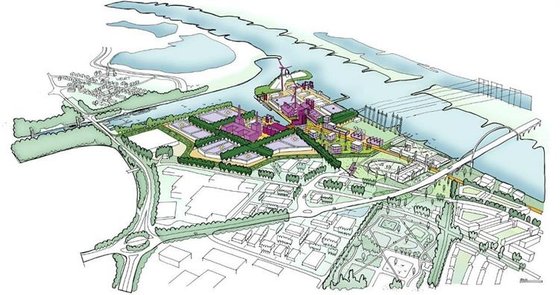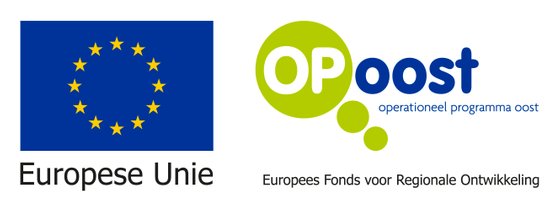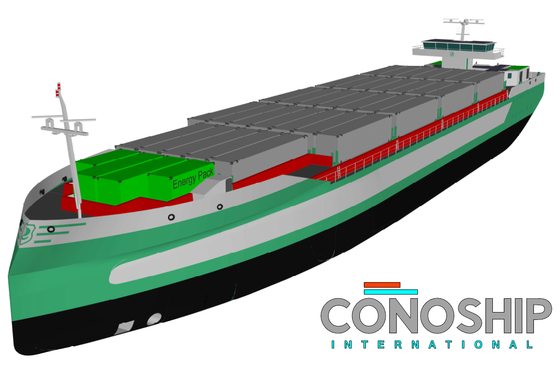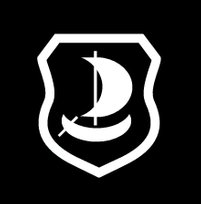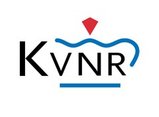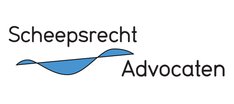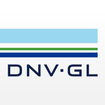NEWS
The Winds of Decarbonisation are Strengthening: Tharsis Sea-River Shipping, signs contract with eConowind and NG shipyard for new Wind-Assist Installation
05.11.2020
Even with the current restrictions and challenges that face the shipping industry with the pandemic and the latest low oil prices, wind-assisted propulsion solutions are still making headway as the decarbonisation drive in the industry accelerates and companies are looking for technology solutions that are market ready and have the potential to deliver substantial savings today. Netherlands-based eConowind and Tharsis announced their collaboration today with eConowind contracted to install two of their wind-assist 3 x 9m TwinFoil units on their 88m, 2,364 dwt diesel-electric general cargo vessel, MV Tharsis.
“We always try to use as little as fuel as possible on our weekly voyage from Duisburg to the East coast of the UK. Using currents and tides and optimizing our schedule. Adding wind-assisted propulsion will further reduce our fuel consumption. Especially interesting is to see how much the tipping point of starting a second generator will shift.” states Jan Albert Bosma, co-owner of Tharsis Sea-River Shipping
Innovation
The eConowind-units are both integrated in a specially designed aluminum Flatrack from which the folding TwinFoil’s can be deployed. The TwinFoil is a further innovation for eConowind next to their previously designed VentiFoils. The TwinFoil is a wing with a flap principle similar to those used by aircraft during landing and take-off. Setting the wings optimally relative to the wind will be done by a small third steering-wing, which is fast and reliable.
Light weight
The Netherlands based NG shipyard will install the system and bring their experience of fabricating aluminum constructions in order to stay under the 2500 kg total weight as needed for the operations on the vessel. Albert Keizer, CEO of NG-shipyard states:
“We are very happy to bring our experience in the specific challenges in this project. We specialize in light-weight but durable constructions at sea and focus on high performance ships with sustainable propulsion. This project combines all of that. We can offer the system at reduced costs with the help of the SDS-program of the Dutch Ministry of Economic Affairs and Climate Policy.
Partnership
Jan Albert Bosma adds, “We look forward to evaluating the wings and do research together in the Wind Assisted Ship Propulsion (WASP) project, part of the EU Interreg North Sea region program.“
The WASP (Wind Assisted Ship Propulsion) project is funded by the Interreg North Sea Europe program, part of the European Regional Development Fund (ERDF) and brings together universities and wind-assist technology providers with ship owners to install, research, trial and validate the operational performance of a selection of wind propulsion solutions.
We are delighted to add Tharsis to our customer base and with both river and North Sea routing with varying winds we expect a lot from the TwinFoil. Of particular interest is the combination of this self-adjusting technology in combination with a modern diesel-electric drive, which in theory should give optimal results.” Comments Frank Nieuwenhuis, CEO of eConowind.
The installation of the system will be the last of five installations under the WASP project and it is scheduled for February 2021. https://nortsearegion.eu/wasp/
Tharsis partnering in E-T Hub consortium for development of marine battery container charging application
28.04.2020
On the site of the former province of Gelderland power station on the Waal in Nijmegen, there will be a sustainable (fast) charging option for battery containers for inland vessels. These containers are loaded with solar and wind series. They are then used to power an electrically powered barge.
The “Energy Transhipment Hub Nijmegen (E-T Hub)” project is receiving a contribution of 1.6 million from the European Regional Development Fund (ERDF). This means 1.2 million from Europe, supplemented with 4-ton co-financing from Gelderland.
Reducing peak load
The E-T Hub project is developing and testing a small, sustainable and innovative fast-charging method for inland vessels on the site of the former Gelderland power station on the Waal in Nijmegen. This E-T Hub combines the charging of mobile energy containers with the reduction of peak loads on the electricity grid. This means that as many surpluses of solar and wind energy, which cannot be connected to the electricity network due to capacity problems of that network, are used for charging these mobile battery containers. These batteries can be used in the transport sector and at festivals and construction projects.
Gelders Measure Package Nitrogen (GMS)
With the knowledge and experience gained, a model is being developed for upscaling the Energy-Transhipment Hub. Concepts are also being developed to link the charging infrastructure to other applications and transport segments, such as trucks, forklift trucks and possibly public transport buses. In addition, it is pre-sorted on the generation and refueling of hydrogen for ships and vehicles.
With all these developments, a contribution is made to the reduction of CO2 and Nitrogen emissions. It therefore contributes to the Gelderland nitrogen approach. The ships on the Waal emit more nitrogen than an average provincial road. That is why the Province of Gelderland is pushing for more sustainable inland shipping and has asked the Province to invest in it.
Partners
The consortium that collaborates in E-T Hub consists of: ENGIE (Nijmegen), BCTN (Nijmegen), eL-Tec (Hattem), Tharsis Sea-River Shipping (Delfzijl) and the municipality of Nijmegen. Tharsis is responsible for the ship-side maritime development and logistics.
More than 4.1 million is invested in the project with a personal contribution from these partners.
Feasibility Study into a Sea-River Container Vessel with Low Emissions
12.07.2019
With Tharsis Sea-river Shipping's current vessel, the shipping company was a forerunner in 2011 with the installation of a diesel-electric propulsion. The first ship of its kind with this fuel and emission-saving technology. Meanwhile, extensive experience has been gained with electric sailing and the shipping company has decided to take the next step. The expansion to sea-river container shipping with a ship that can sail emission-free without adjustments. The subsidy granted by Nederland Maritiem Land (NML) at the start of 2019 ensured that Tharsis was able to work out a concept for such an innovative ship. This research is performed in close collaboration with Conoship International B.V.
The starting points of the design were high employability, also in the event of drought and low water levels on the Waal and Rhine in combination with a low airdraft for these rivers. This allows the transshipment of cargo in the seaports to be skipped at any time. In addition, the ship had to have an electric drive with the possibility of completely emission-free sailing.
For sailing at extremely low water levels, a sailing draft of 170 cm should be possible, research was conducted into various forms of stern vessels. An additional complicating factor was the desired relatively high speed at sea of 13 knots. A pram-shaped aft ship with 3 L-drives has been chosen which is integrated into the aft ship by means of a headbox which functions as a tunnel in a situation with little draft.
The focus of Tharsis was on investigating the possible emission-saving techniques and power sources that can feed the electric drive in a sustainable way. The sailing area lends itself to look beyond the current and often limited possibilities in maritime shipping to save emissions by using the infrastructure of inland shipping.
Conoship International B.V. has included the results of research into these techniques in a concept ship design. This 300 Teu open-top design is a ship with electric propulsion, which will be powered by energy containers.
The research has shown that several market parties are now developing containerized energy solutions. These are initially aimed at the infrastructure of inland shipping and can be ready for the market when the ship design can actually be put into service and possibly even earlier. The various solutions consist of battery technologies such as Lithium-Ion and Aluminum-Air. In addition, work is being done on a hydrogen fuel cell whereby the hydrogen is stored in the same container. In order to be able to make optimum use of one of these solutions, or a combination thereof, 14 energy container store positions have been planned on the fore and aft ship. This makes it possible to switch easily between the aforementioned or new energy sources without affecting the integrity of the propulsion system. Practice has shown that the conversion of a conventional propulsion system to a more sustainable solution on existing ships is rarely done because an older ship does not justify the costly investments due to the payback period.
Tharsis Sea-River Shipping has presented the concept design to a several interested parties as a "green" solution for congestion in the major sea ports as well as on certain road routes. The positive outcome means that Tharsis is currently working out the actual construction of this vessel.
For enquiries regarding this project please contact Jan Albert Bosma. jabosma@tharsis-management.nl.


